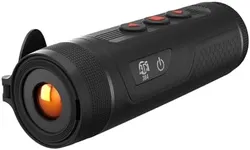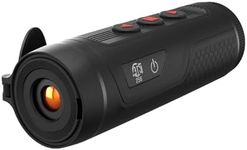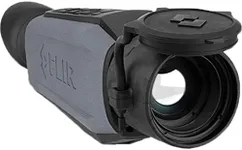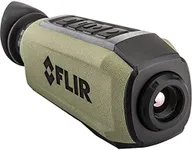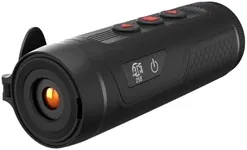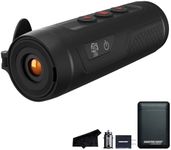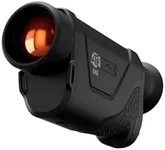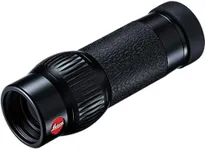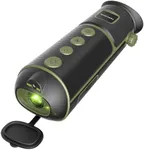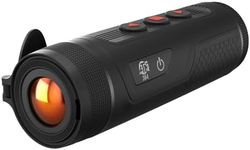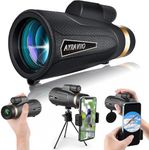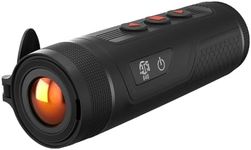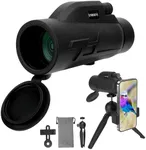Buying Guide for the Best Vision Monoculars
Choosing the right monocular can greatly enhance your outdoor experiences, whether you're bird watching, hiking, or attending a sports event. Monoculars are compact and lightweight, making them a convenient alternative to binoculars. To find the best monocular for your needs, it's important to understand the key specifications and how they impact performance. Here are the main specs to consider and how to choose the right one for you.MagnificationMagnification indicates how much closer an object will appear compared to the naked eye. For example, a 10x magnification means the object will appear ten times closer. Higher magnification provides more detail but can make the image shakier and harder to stabilize. If you need a monocular for general use or hiking, 6x to 8x magnification is usually sufficient. For bird watching or detailed observation, 10x or higher might be preferable, but consider using a tripod for stability.
Objective Lens DiameterThe objective lens diameter, measured in millimeters, determines how much light the monocular can gather. A larger diameter allows more light, resulting in a brighter image, especially in low-light conditions. However, larger lenses also make the monocular bulkier. For daytime use, a lens diameter of 20mm to 30mm is typically adequate. For low-light conditions like dawn or dusk, consider a diameter of 40mm or more.
Field of ViewField of view (FOV) is the width of the area you can see through the monocular, usually measured in feet at 1,000 yards or meters at 1,000 meters. A wider FOV is beneficial for tracking moving objects and scanning large areas. If you need a monocular for bird watching or sports events, a wider FOV (around 300 feet at 1,000 yards) is ideal. For detailed observation of stationary objects, a narrower FOV is acceptable.
Lens CoatingLens coating improves light transmission and reduces glare, enhancing image clarity and brightness. There are different levels of coating: coated (a single layer on one lens surface), fully coated (a single layer on all air-to-glass surfaces), multi-coated (multiple layers on one surface), and fully multi-coated (multiple layers on all surfaces). Fully multi-coated lenses provide the best image quality. If you prioritize image clarity and brightness, opt for fully multi-coated lenses.
Eye ReliefEye relief is the distance from the eyepiece to your eye while still seeing the full field of view. This is especially important for eyeglass wearers. Longer eye relief (15mm or more) allows comfortable viewing without removing glasses. If you wear glasses, look for a monocular with at least 15mm of eye relief. If you don't wear glasses, shorter eye relief is acceptable.
Size and WeightThe size and weight of a monocular affect its portability and ease of use. Compact and lightweight models are easier to carry and handle, making them ideal for hiking and travel. However, they may have smaller objective lenses and lower magnification. If portability is a priority, choose a compact model. If you need higher performance and don't mind the extra weight, a larger monocular may be suitable.
Waterproof and FogproofWaterproof and fogproof features protect the monocular from moisture and internal fogging, ensuring clear vision in various weather conditions. These features are achieved through O-ring seals and nitrogen or argon purging. If you plan to use the monocular in wet or humid environments, or for activities like boating, choose a model with waterproof and fogproof capabilities.
